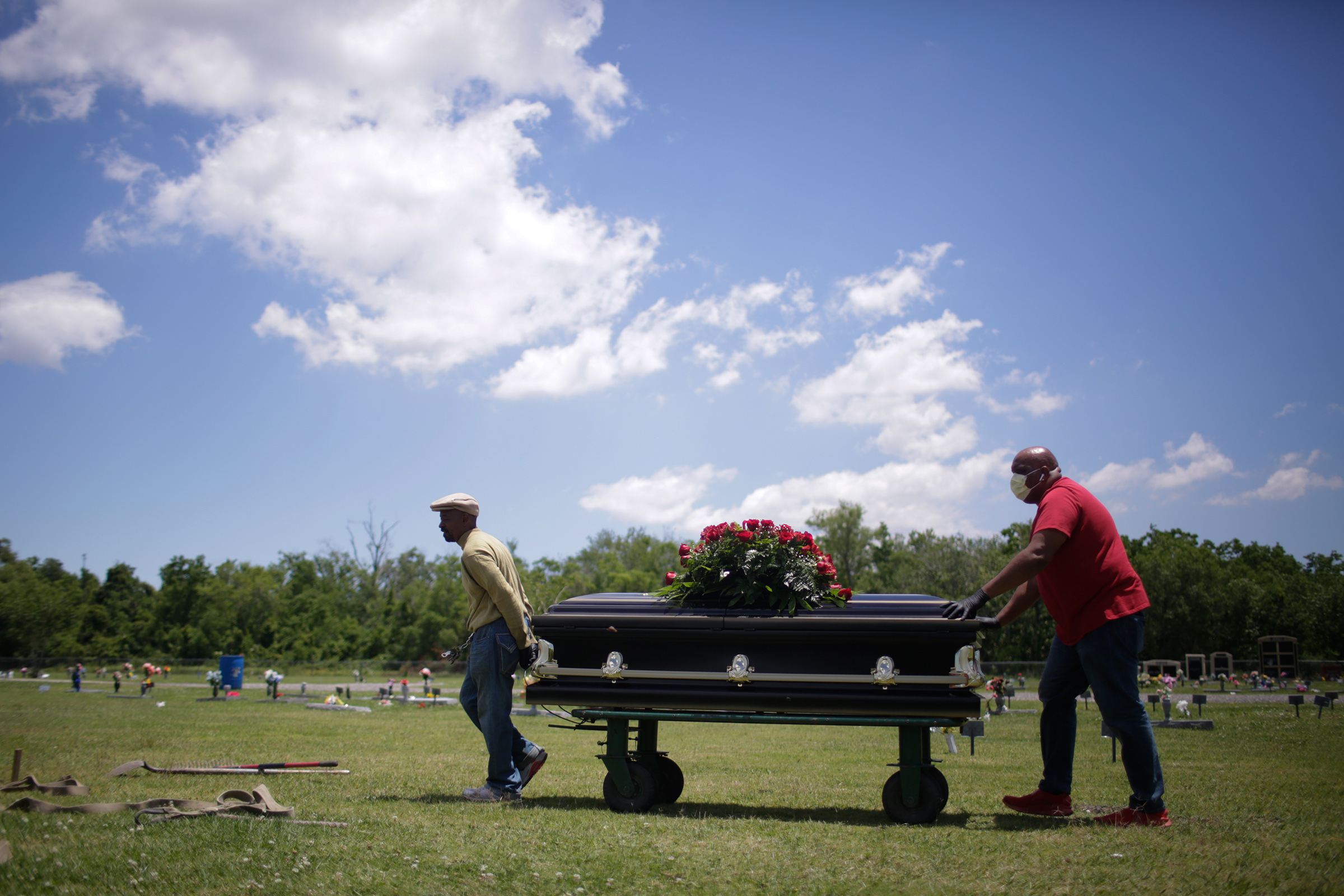
“Wow, I just can’t imagine.” That’s what people emailed, texted, and uttered after my parents died. They couldn’t imagine losing a mother to a violent car accident or a father, a mere four years later, to a heart attack in the middle of the night while he was traveling abroad. I was 34 and felt truly alone, and while talking to someone about my grief would have helped immeasurably, “I can’t imagine” felt like the opposite of an invitation—it felt like a warning. Don’t even try to share, I won’t get it. But if my grief was too hard for me, and it was too hard for others, what was I supposed to do with it?
“I can’t imagine.” Families and individuals who have lost children, siblings, partners, and friends hear it all the time, this confession of an inability to imagine the worst, the unspeakable, the most feared event. I understand why people offer the phrase—as an earnest gesture of solace or a filler in lieu of anything else—but it rarely brings comfort. More often, the recipients are left feeling even more isolated at a time when grief has already banished them to a cold, dark place.
Read More: I Didn’t Want to Push My Aunt to Get the Vaccine. Now I Live With Regrets
The truth is, it’s not that we can’t imagine the experience. It’s that we don’t want to. In saying that the deep loss someone is feeling is too unbearable to picture, what we’re really doing is drawing a line: not mine, not ours, only yours. Perhaps we think we might prevent this pain, this chaos, this fear and uncertainty, from reaching our own lives. But if this global pandemic has taught us anything, it’s that grief doesn’t work that way. Grief belongs or will belong to everybody, if not today then someday.
In 2013, I co-founded a publication and global community called Modern Loss, which is centered on helping people move through the long arc of grief. The other day I was aimlessly scrolling through our Instagram history and stopped cold at a post from Feb. 22, 2021, that announced 500,000 deaths from COVID-19 in the U.S. I scrolled back further, to Sept. 23, 2020, and found another post marking a grim milestone: 200,000. The number was described at the time as “unfathomable.”
Now we’re at roughly 1 million. A number that equals the population of Austin, or, perhaps more fittingly for these times, of Odesa, Ukraine, at least until recently. A number that feels at once make-believe and overwhelming. The actual number could be as high as 200,000 more, given the excess deaths that surpass typical mortality rates that seem to stem directly or indirectly from the pandemic.

“Can you imagine?” For a while, we had a pretty good excuse not to: We set off on this terrible adventure under an Administration that tried to convince us that we should not be afraid of this new virus, nor should we let it “dominate” our lives. The government tried to disconnect us from reality when reality was disconnecting us from the humans with whom we used to spend our days: co-workers, relatives, neighbors, the shop owner on the corner. For so long, we were physically separated from one another, trying to deal with our own “new normals,” which likely involved the addition of too many roles and the subtraction of others. Aside from glimpses on screens, we didn’t see the insides of other people’s homes. And so we didn’t see the people who inhabit those homes going through the motions of daily life after a loved one’s death.
Read More: Death Doulas Used to Be Rare. The COVID-19 Pandemic Changed That
But now, as we attempt to more fully resume in-person interactions (at least between variants), we must force ourselves to look, pay attention, and see who and what has been lost. We must do our best to seek out and learn people’s stories. We must check in on those we know, but also ask a stranger, “How are you?” and actually listen to the answer. And if someone throws a fit about the temperature of the milk in their latte, we must remember that we don’t know what kind of grief they might be shouldering, due to COVID-19 or otherwise. Not all masks are visible.
We must engage with these stories, however difficult, for so many reasons: Public health is failing us (last week I paid $200 for a required rapid PCR test, one that had been free of charge until March). Congressional Democrats included national bereavement job-protection policies in the Build Back Better Act proposal and then couldn’t pass it. We have recently pathologized grief in the Diagnostic and Statistical Manual of Mental Disorders under the term prolonged grief disorder. And we feel so lonely.
This pandemic is not going anywhere; there will surely be milestones beyond the million-death mark. And the “grief pandemic” will far outlast the public-health emergency. Researchers last year found that for every COVID-19 death, there are nine people who are directly affected—the “bereavement multiplier,” they call it.
It’s hard to know what to say in the face of all this devastation, but it can be so much worse to say nothing at all. What I’ve witnessed, what I know to be true, is that storytelling is how we bring one another into our loss experiences and offer meaningful, powerful support. This means telling stories about our lost loved ones—that little joke they told so often that the rest of the family would start rolling their eyes upon hearing the first word, that thing they used to cook that somehow made everything OK, that time they messed up big-time and taught us an important lesson because of it, that special way they held us in their gaze. But it also means talking about our own suffering in the wake of that person’s death—the longing we feel when the nightly phone calls we’ve come to expect suddenly stop, the breakdowns in public settings, the moments we are completely focused on something else and then remember.
More from TIME
Read More: These Classes Are Near-Death Experiences, and That’s a Good Thing
Talking about how we’re feeling, how we’re coping, what we miss about our person (or, possibly, people) lessens the burden of sadness. Sharing memories keeps those we’ve lost present in our hearts and minds, and reminds us that the intensity of our grief is a sign of having loved deeply. Storytelling is how we create community, pull one another through the darkness, realize what others are going through—financially, psychologically, physically, intimately, logistically. It inspires us to speak up for more government support and protection, and it destigmatizes something that should never have been a stigma in the first place. Storytelling, not numbers, is how we make people feel acknowledged. And acknowledgment is essential to the healing process. This requires our imagination, not to make ourselves miserable, but to make the experience of grief communal and, most important, survivable.
In Hamilton, there is a song about grief called “It’s Quiet Uptown,” in which the cast sings about Alexander and his wife Eliza enduring the “unimaginable”—the death of their child.
There are moments that the words don’t reach
There’s a grace too powerful to name
We push away what we can never understand
We push away the unimaginable
Every time the track comes up on my playlist, I consider skipping to the next one. Surely, I could use something happier, more hopeful, more distracting, something that could serve as an innocuous aural background. Every time, I consider pushing it away. And yet, I listen. And then, I imagine.
More Must-Reads From TIME
- The 100 Most Influential People of 2024
- The Revolution of Yulia Navalnaya
- 6 Compliments That Land Every Time
- What's the Deal With the Bitcoin Halving?
- If You're Dating Right Now , You're Brave: Column
- The AI That Could Heal a Divided Internet
- Fallout Is a Brilliant Model for the Future of Video Game Adaptations
- Want Weekly Recs on What to Watch, Read, and More? Sign Up for Worth Your Time
Contact us at letters@time.com